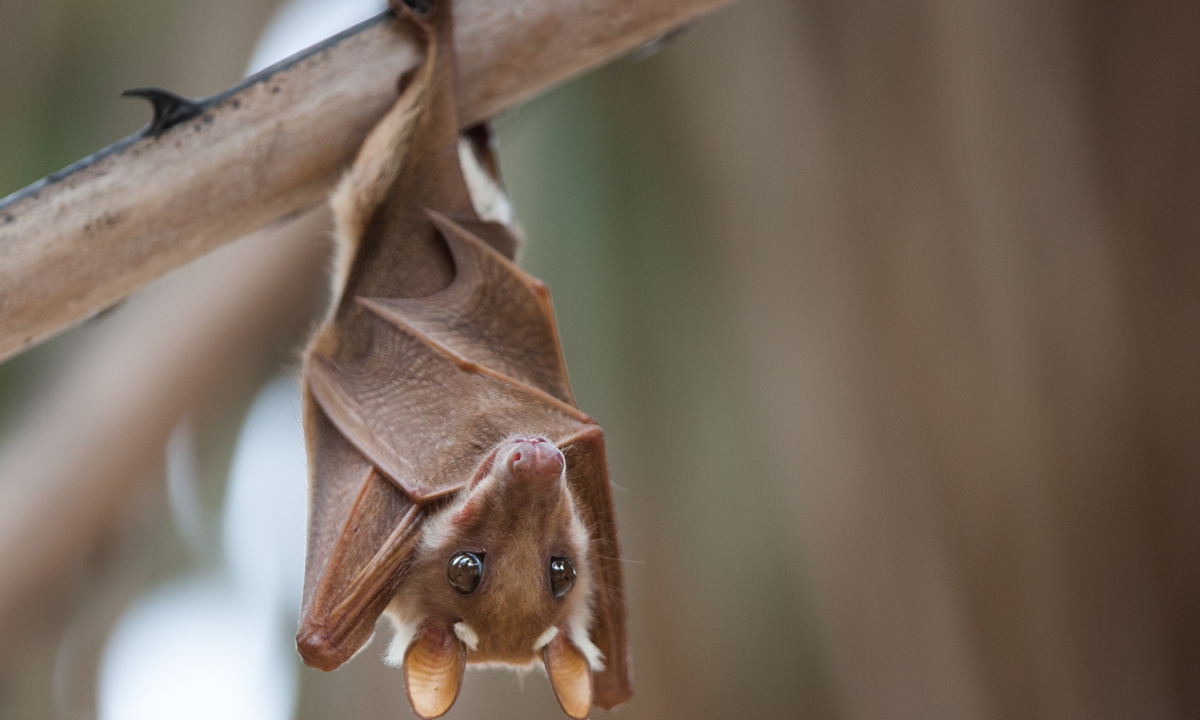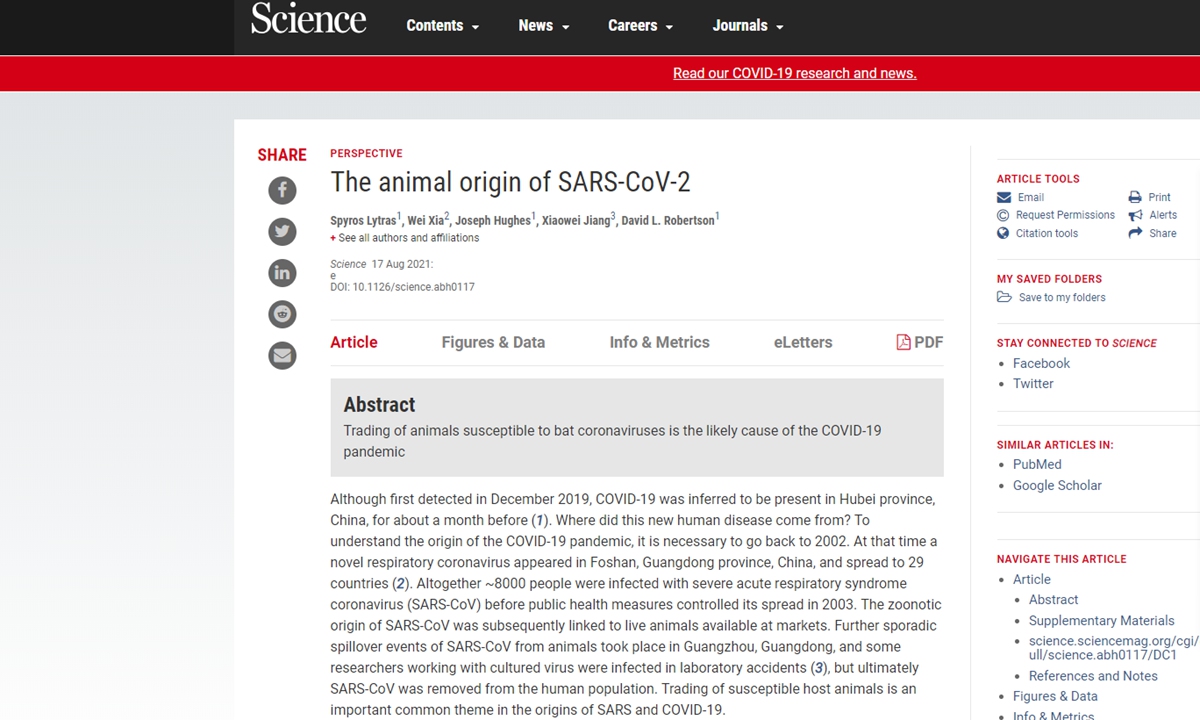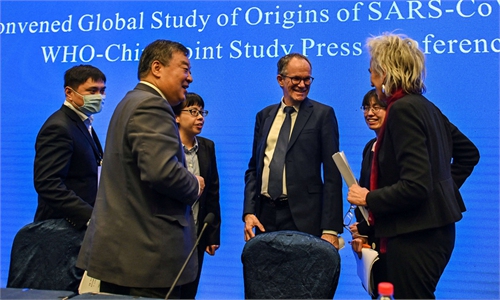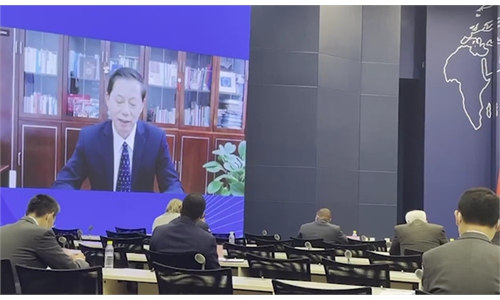
Bat. Photo: VCG
The COVID-19 pandemic was probably caused by trading of animals susceptible to bat coronaviruses, and to locate the virus origins we need to sample over wider geographical areas including China, Southeast Asia and Japan where horseshoe bats inhabit, a new paper said while rejecting the Wuhan "lab-leak" theory.
The paper, titled "The animal origin of SARS-CoV-2," said that trading of susceptible host animals is an important common theme in the origins of SARS and COVID-19, and SARSr-CoV-susceptible live intermediate host animals are the primary source of the SARS-CoV-2 progenitor that humans were exposed to.
The paper, conducted by a group of Chinese and international scientists, including researchers from Medical Research Council-University of Glasgow Centre for Virus Research and South China Agricultural University, was published in Science, on Tuesday.
David L Robertson, a professor at MRC-University of Glasgow Centre for Virus Research and one of the authors of the paper, told the Global Times on Wednesday that the main point of the paper is that available data supports COVID-19 being caused by a natural virus that probably emerged from horseshoe bats and, much like SARS, this was probably through contact with infected intermediate host animals in markets in Wuhan.
SARS-CoV-2 first emerged in Wuhan, which is more than 1,500 kilometers from the closest known naturally occurring sarbecovirus collected from horseshoe bats in Southwest China's Yunnan province, but Yunnan-collected viruses are highly divergent from the SARS-CoV-2 progenitor, providing key genetic evidence that weakens the "lab-leak" notion, the paper said.
Robertson said that focus on Yunnan as a probable origin of the progenitor virus is misleading, and sampling over wider geographical areas is very important if we're going to find the origin of SARS-CoV-2 and prevent the risk of a future spillover.

Photo: screenshot of the paper
Since its emergence, sampling has revealed that coronaviruses genetically close to SARS-CoV-2 are circulating in horseshoe bats, which are dispersed widely from East to West China, and in Southeast Asia and Japan, according to the paper.
"There's categorically no evidence that the SARS-CoV-2 was created in a Wuhan lab or escaped from one," Robertson said.
The topic of virus origins has become "so politicalized," and "it is important to make sure the right investigations are prioritized, i.e., we follow the evidence to where it leads and don't get caught up scapegoating individuals or institutions based on hypothetical scenarios," he told the Global Times last month. He was commenting on a previous paper he coauthored with some 20 international scientists which showed that there was a high probability the origin of the virus is zoonotic and that there is zero evidence that it came from a lab.
A sensible next step is to have serology, sampling and interviewing of the individuals (e.g., trappers, traders, and farmers) connected to the sources of wildlife sold in the Wuhan markets in October and November 2019, according to the new paper.
It is likely that this wildlife had been trapped or farmed elsewhere and sold to Wuhan markets through the cold chain, the paper said.
Some farmed species, such as American minks, red foxes, and raccoon dogs were sold alive for food by Wuhan animal sellers, as was trapped wildlife, including raccoon dogs and badgers, although no bat species were being sold, the paper said.
Robertson said testing susceptible farmed animals would seem sensible, and we should also be open to there being an unidentified intermediate host species in the wild.



